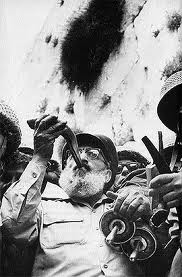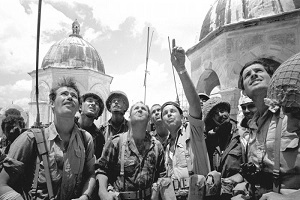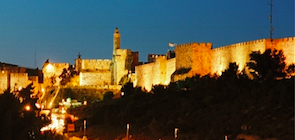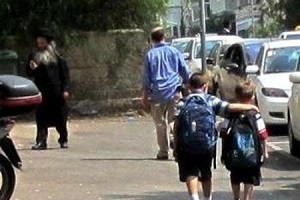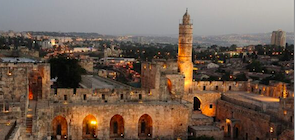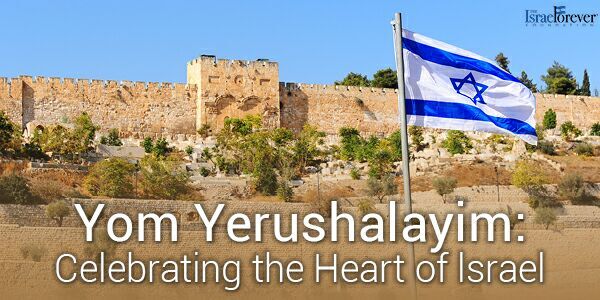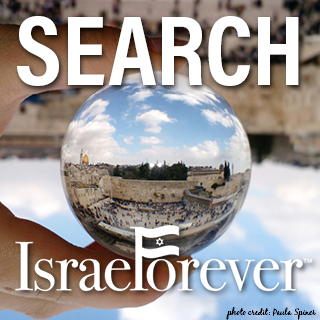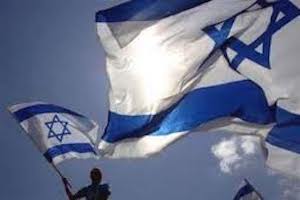Yom Yerushalayim: The Reunification of A People And A Past
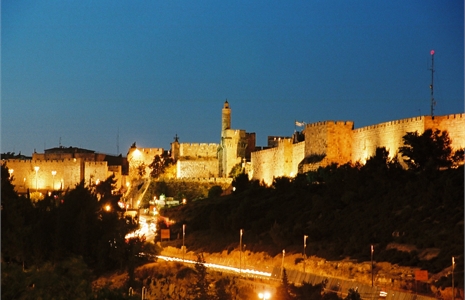
There has been a continuous Jewish presence in Jerusalem, and our connection to and passion for the city has been preserved as a memory by Jewish people around the world.
Though the modern state of Israel was born in 1948, for years Jews were cut off from the Old City of Jerusalem and the Kotel, the Western Wall - the heart of the Jewish people, the axis of our collective national and historical identity, the center of our faith, and the focus of the history of the Jewish people for generations.
Throughout Israel and around the world, on the 28th of the Hebrew month of Iyar, we celebrate being reunited with the city of Zion, Yerushalayim Shel Zahav, our only Jerusalem.
History shows that it was the Jews who have made Jerusalem important to the world. In 1004 BCE, King David established Jerusalem as the capital of the Kingdom of Israel (2 Samuel 5:6). Following the first exile, he proclaimed:
"If I forget you Jerusalem, let my right hand lose its strength. Let my tongue cling to my palate if I fail to recall you, if I fail to elevate Jerusalem above my highest joy."

Three times a day, or even just twice a year, for thousands of years, Jews turn their faces towards Jerusalem and the Temple Mount and pray for a return to Jerusalem and to Tzion.
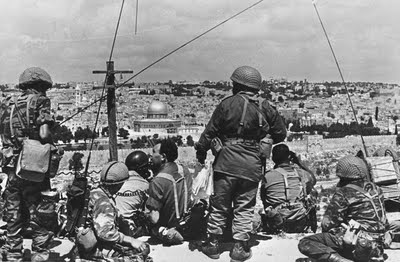
From the Album The Great Victory in Pictures, 1967
When we build our houses we are to leave a square un-plastered, we keep a symbolic menorah on our shelves, and we break a glass at weddings in memory of the destruction of Jerusalem as a sign of our continued hope and commitment.
Memory and connection were kept alive and the Jewish people lived with Jerusalem forever in our hearts.
In the spring of 1967, a war was forced upon us by the Arab countries that surrounded Israel who attacked the Jewish state, determined to destroy her.
Instead of suffering defeat, Israel won the war in just six days.
VIDEO:
Witness the reunification of the Jewish People to our holiest site on earth
Witness the reunification of the Jewish People to our holiest site on earth
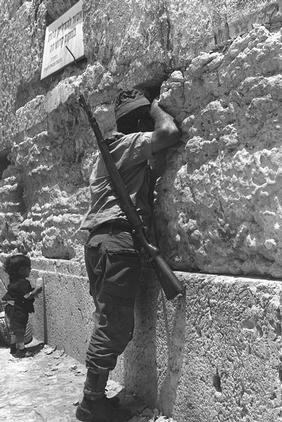
On June 7 - more than 3000 years after King David sanctified it as the capital of Israel and the city of the Temple, and nearly 1,900 years after it fell and was torn from us during the destruction of the Second Temple - Jerusalem was united and once again was restored as the capital of the Jewish homeland.
The Israeli Knesset passed laws to protect holy sites and ensure freedom of worship to all. Since this important day in history, Christians, Muslims and Jews have all been granted full religious and cultural freedom in the holy city. Additionally, Arabs living within Jerusalem’s municipal boundaries are granted Israeli citizenship.
In a statement at the Western Wall, Minister of Defense Moshe Dayan indicated Israel’s peaceful intent and pledged to preserve religious freedom for all faiths in Jerusalem:
This morning, the Israel Defense Forces liberated Jerusalem. We have united Jerusalem, the divided capital of Israel. We have returned to the holiest of our holy places, never to part from it again. To our Arab neighbors we extend, also at this hour—and with added emphasis at this hour—our hand in peace. And to our Christian and Muslim fellow citizens, we solemnly promise full religious freedom and rights. We did not come to Jerusalem to conquer the Holy Places of others, and not to interfere with the adherents of other faiths, but in order to safeguard its entirety, and to live there together with others, in unity.
- June 7, 1967 (Iyar 28, 5727)
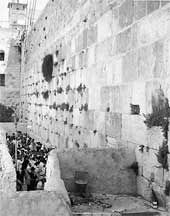
When Israeli soldiers liberated the Temple Mount area, site of the Western Wall, the holiest site in Judaism, they found the area to be covered in filth, neglected in every way imaginable.
Fifty-eight synagogues, some hundreds of years old, were destroyed, their contents looted and desecrated while Jewish religious sites were turned into chicken coops or animal stalls.
The Jewish cemetery on the Mount of Olives, where Jews had been burying their dead for over 2500 years, was ransacked; graves were desecrated; thousands of tombstones were smashed and used as building material, paving stones or for latrines in Arab Legion army camps. On top of the cemetery, graves were demolished to make way for the building of the Intercontinental Hotel and surrounding roads.
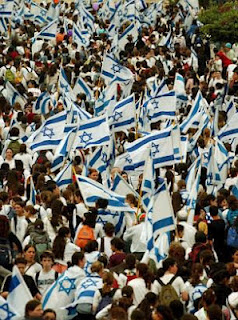
On May 12, 1968, the Chief Rabbinate of Israel declared the 28th of Iyar a minor religious holiday as a way of thanking G-d for answering the 2000 year old prayer: “L’Shana Ha’Baa B’Yerushalayim, Next year in Jerusalem".
On March 23, 1998, the Knesset passed the Jerusalem Day Law, making the day a national holiday celebrated by parades through the city of thousands of people from around the world. This day holds such importance for the Jewish people that Hallel, the prayer of celebration, is recited.
The eternal Jewish love for and commitment to Jerusalem are deeper and stronger than any other. Our continued commitment to this city of our national legacy are the most important tools to ensure Jewish sovereignty in our historic and sacred Jerusalem FOREVER.
"Jerusalem is united, will never be divided again."
Yitzhak Rabin
“Only a democratic Israel has protected freedom of worship for all faiths in the city. Jerusalem must never again be divided. Jerusalem must remain the united capital of Israel.”
Benjamin Netanyahu
"Ten measures of beauty descended to the world, nine were taken by Jerusalem."
Talmud: Kiddushim 49b
"'Eternity' - this refers to Jerusalem"
Talmud: Berachot 58a
Did You Know...
The name Jerusalem appears in the Torah at least 667 times with the first biblical reference in Bereshit 14:18 to a town called “Salem” and the first reference by the name “Jerusalem” in Judges 1:8
Jerusalem was again recalled in the prophecy of Isaiah which was heard in this city 2,700 years ago and which still resonates: "How pleasant are the footsteps of the herald upon the mountains announcing peace, heralding good tidings…"
Jerusalem appears in the Christian New Testament 154 times.
Until the 10th Century, Muslims called Jerusalem, “Ilya.” From the 10th Century on, Muslims used names with Jewish references: “Beit Al-Makdis,” the Arabic version of Beit HaMikdash (Hebrew, for the Jewish Temple), “Al Quds”–a version of “Ir HaKadosh” (Hebrew, for Holy City) and even “Siyyun” (Zion).
The 13th Century Arab biographer and geographer, Yakut, wrote:
"Mecca is holy to Muslims, and Jerusalem to the Jews."
Recommended for you:
How are You Commemorating this Day?
Check out Our Yom Yerushalayim Resources Today!
About the Author


